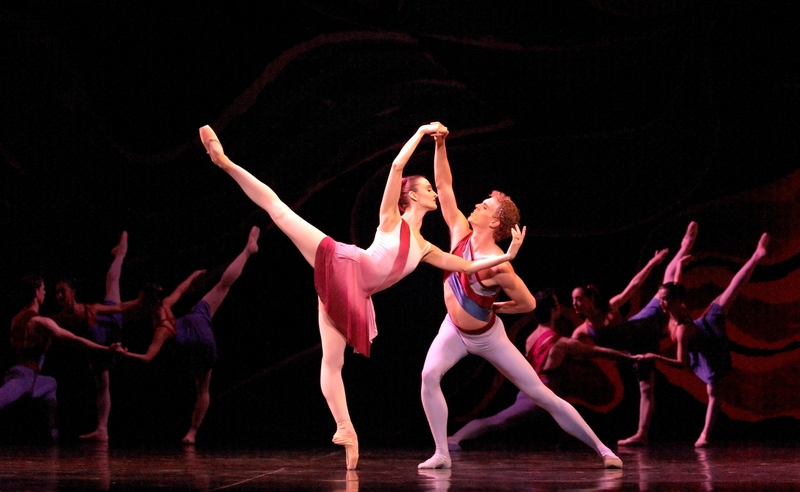
originally published in the Focus Section on Technique, Bourgeon Vol. 2 #3
Ballet dance, like all art forms, has a technique that supports and enables artistic expression. Today we see a growing emphasis on the technical feats of dancing instead of craftsmanship or artistic expression. American audiences, more accustomed to competition than compassion, seem to focus on the execution of technique (for example, the number of turns, height of jumps, acrobatic partnering.) Technique has become the end result instead of simply one of the means to artistic results.
A student of Ballet actually has at least three techniques to master. First is the basic classroom technique, meaning terminology and basic movements. Second is a performance technique, meaning how a dancer performs across the proscenium and impacts the space. Performing technique also includes how to enter the stage, how to exit the stage, how to use one’s face (especially eyes), and how to command attention through a physical presence. Third is partnering, meaning weight exchange between dancers in small or large groups, synchronization and awareness.
Ballet classroom technique combines coordination, flexibility and strength to create fluid positions, lines, feats and phrases. The lower body uses three basic coordinations: flex/point (feet), bend/straighten (knees) and turn out (hips). All technical steps can be broken down into a series of these coordinations. Classroom curriculum often separates these elements into specific exercises. Ballet uses very fine muscle control, and the focused exercises endow dancers with unusual control, strength and precision. Ballet dance combines elements to make a step, or a phrase. From the first exercise at the barre (and even before – even walking into the studio) the correct execution of these coordinations is essential to aquiring flexibility and strength.
Ballet uses a far more expanded range of motion than everyday movement, and even than other athletic endeavors. Flexibility is increased through dedicated stretching done outside the classroom and repeated, correct use of the coordinations mentioned above. Strength can be attained through what I call ‘slow’ and ‘fast‘ work. ‘Slow’ work starts with the first initiation of the movement from the center, and works through the lines of the movement to the edge of the body, achieving a specific body orientation called ‘position’. A ballet dancer needs both slow work to build muscle recognition and bulk strength and fast work to build muscle activation and twitch strength.
The upper body coordinates through the breath, which influences not only the use of the torso, arms and head but also the lines they make. Correct breathing is not taught as much as it should be. Properly executed epaulement – the coordinated use of the torso and head – is a result of the breath used in a movement versus a specific posture mandated for a certain lower body position. Proper breathing also increases stamina.
In additional to breath control, music is a wonderful coordination tool. Breaking the musical bar into its meter allows teachers to create even rhythmic patterns such as (1 – 2) or uneven, such as (1 – (2-3)) or (1-2-(3)). These rhythms can help a dancer find the approach, stress, and energy necessary to execute the more difficult steps. Musical training can also assist a dancer in finding additional movements between the steps.
Mime and acting are critical for the development of performance technique, but are often left out of a dancer’s training. Even for abstract ballets, how one stands, walks, and looks determine the artistic expression in a piece and the awareness that comes with mime and acting training is indespensable. To paraphrase Balanchine, when there is a dancer, lights, music onstage there is a story, or at least an atmosphere of feeling. This atmosphere of feeling can not be accomplished with technical prowess.
In conclusion, technique is only a tool. Important, yes, but one of many that will give a dancer the facility he/she needs to bring the art to life. It is true that in preparing for a performance, the dancer must solve the step before he/she can express the step. Physical accomplishment is only a small step in one’s artistry.
Michael Bjerknes (Ballet) has been acclaimed as an “Inspired, supportive and precise” teacher whose “Ballet classes are demanding, well-structured and musical.” He has a “Wealth of experience in the ballet world applied with total commitment.” As a soloist with the Houston Ballet and a principal with the Joffrey Ballet, Michael was equally at home in the classical and contemporary repertories. Gerald Arpino, Robert Joffrey, Agnes de Mille, Moses Pendleton, Ben Stevenson and Choo San Goh choreographed original roles for him. In addition to all of the classics, Michael performed ballets by Frederick Ashton, George Balanchine, John Cranko, Hans van Manen, and Jiri Kylian. Michael was Ballet Master for the Washington Ballet and the Universal Ballet and occasionally teaches company class for the Joffrey Ballet. He coaches gymnasts as well.
[Editor’s Note: Michael Bjerknes passed away, at age 51, on April 14, 2008 following a battle with Colon Cancer. His contributions and spirit were honored in The Washington Post, and on BalletAlert by Alexandra Tomalonis, and in many other places. He is missed.]